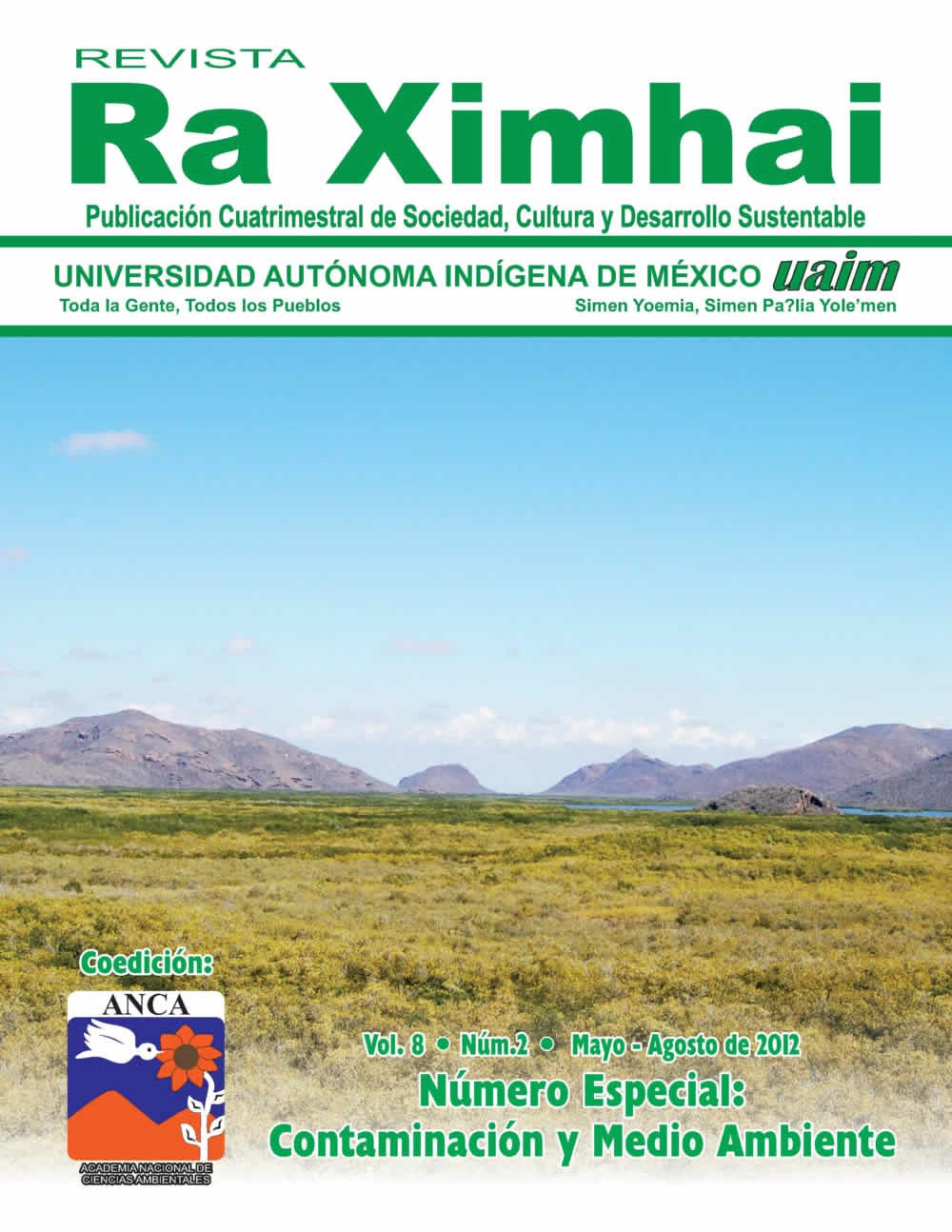Exposure to organochlorine pesticides in indigenous children from Potam, Sonora, Mexico
Keywords:
plaguicides, bioaccumulation, childrenAbstract
The main activity in southern Sonora is agriculture, where for many years a wide variety of pesticides have been used irrationally and indiscriminately, including compounds banned in other countries. Due to the lack of data on pesticide residues in biological and environmental samples of residents of the Yaqui ethnic group, the objective of this study was to evaluate the exposure of children to p,p'-DDT, p,p'-DDE, p,p'-DDD, α, β-endosulfan and lindane in order to determine the baseline levels of these toxins in the population. A cross-sectional study was conducted including children from Potam (high exposure) and children from Cd. Obregón (low exposure). Blood samples were analyzed to determine these pesticides by gas chromatography. 100% of the samples had detectable levels of p,p’-DDE, in a range of 0.3-4.3 g/L, lindane was only present in 33.33% of the Potam children with values between 0.7±0.2 g/L. Endosulfan was found in both communities, but the highest levels were for the Potam children in the range of non-detectable (ND) up to 2.8 g/L. The soil concentration for total DDT (∑ pp-DDT, pp-DDE, pp-DDD) was in the range of ND up to 36.60 g/Kg. A statistically significant association was also found between blood levels of p,p’-DDE and seafood consumption. The presence of these agrochemicals in both communities shows the high residuality and bioavailability of these compounds in the environment through different routes of exposure to the population.
Downloads
References
Albert, L. 1996. Persistent pesticides in México. Rev. Environ. Contam. Toxicol. 147: 1-44.
Burgos, A., García, C., Aldana, M., Meza,
M. 2005. Detection and Quantification of Insecticides in Shrimp Grown in a Coastal Farm in Sonora, Mexico. Bulletin of Environmental Contamination and Toxicology. 74:335–341.
Helling, C., Kearney, P., Alexander, M. 1991. Behaviour of pesticides in soils. Adv. Agron. 23. Pp. 147.
González, F., Cisneros, X., Fuentes, C., Díaz, G., Botello, V. 2002. Pesticides distribution in sediments of a tropical coastal lagoon adjacent to an irrigation district in norwest Mexico. Environ. Technol., 23: 1247-56.
Herrera-Porugal, C., Franco, G., Zelada,
Vol. 8, Núm. 2 / Mayo - Agosto 2012 Edición Especial: Contaminación y Medio Ambiente 127
V., Schlottfeldt, Y., Rodríguez, M., Barrientos, H. 2008. Niveles de plaguicidas organoclorados (DDT y DDE)
en niños de comunidades endémicas de paludismo en Chiapas, México. Revista Latinoamericana de Recursos Naturales. 4(3): 349-356.
Meza, M, M.M. Informe Técnico Final 2011. SON-FOMIX-CONACYT. “Evaluación del riesgo en salud por exposición a plaguicidas, y As en niños residentes de los Valles del Yaqui y Mayo, Sonora”
Osorio, C. 2008. Determinación de plaguicidas organoclorados en suelo de comunidades rurales del Valle del Yaqui y Mayo Sonora, México. Tesis Lic. en Tecnología de Alimentos, Instituto Tecnológico de Sonora. Pp. 48-49.
Pastor, S. 2002. Biomonitoreo de cuatro poblaciones agrícolas Europeas, expuestas a plaguicidas, mediante el ensayo de micronúcleos. Tesis doctoral. Universidad Autónoma de Barcelona. Barcelona, España. Pp. 20-28.
Pérez-Maldonado, I., Trejo, A., Ruepert, C., Jovel, R., Méndez, M., Ferrari, M., Saballos- Sobalvarro, E., Alexander, C., Yañez- Estrada, L., López, D., Henao, S., Pinto, E., Díaz-Barriga, F. 2010. Assesment of DDT levels in selected environmental media and biological samples from Mexico and Central America. Chemosphere 78:1224-1249.
Pitarch, E. 2001. Desarrollo de metodología analítica para la determinación de plaguicidas organofosforados y organoclorados en muestras biológicas humanas. Tesis doctoral. Universidad de Jaume. Valencia, España. 41-64.
Downloads
Published
How to Cite
Issue
Section
License
Copyright (c) 2012 A. L Cejudo, E. , M. M. Meza, M. , J. J. Balderas, C. , H. I. Mondaca, R. R. Rodríguez, A. M. Renteria M. , F. A. Félix

This work is licensed under a Creative Commons Attribution-NonCommercial 4.0 International License.
Usted es libre de:
- Compartir — copiar y redistribuir el material en cualquier medio o formato
- Adaptar — remezclar, transformar y construir a partir del material
- La licenciante no puede revocar estas libertades en tanto usted siga los términos de la licencia
Bajo los siguientes términos:
- Atribución — Usted debe dar crédito de manera adecuada , brindar un enlace a la licencia, e indicar si se han realizado cambios . Puede hacerlo en cualquier forma razonable, pero no de forma tal que sugiera que usted o su uso tienen el apoyo de la licenciante.
- NoComercial — Usted no puede hacer uso del material con propósitos comerciales .
- No hay restricciones adicionales — No puede aplicar términos legales ni medidas tecnológicas que restrinjan legalmente a otras a hacer cualquier uso permitido por la licencia.








